
The Lockheed P-80 Shooting Star was the first jet fighter used operationally by the United States Army Air Forces (USAAF) during World War II. Designed and built by Lockheed in 1943 and delivered just 143 days from the start of design, production models were flying, and two pre-production models did see very limited service in Italy just before the end of World War II. Designed with straight wings, the type saw extensive combat in Korea with the United States Air Force (USAF) as the F-80.

The Cessna O-2 Skymaster is a military version of the Cessna 337 Super Skymaster, used for forward air control (FAC) and psychological operations (PSYOPS) by the US military between 1967 and 2010.

The National Museum of American History: Kenneth E. Behring Center collects, preserves, and displays the heritage of the United States in the areas of social, political, cultural, scientific, and military history. Among the items on display is the original Star-Spangled Banner. The museum is part of the Smithsonian Institution and located on the National Mall at 14th Street and Constitution Avenue NW in Washington, D.C.

The Consolidated Vultee XP-81 is a development of the Consolidated Vultee Aircraft Corporation to build a single seat, long range escort fighter that combined use of both turbojet and turboprop engines. Although promising, the lack of suitable engines combined with the end of World War II doomed the project.

The Grumman F3F is a biplane fighter aircraft produced by the Grumman aircraft for the United States Navy during the mid-1930s. Designed as an improvement on the F2F, it entered service in 1936 as the last biplane to be delivered to any American military air arm. It was retired from front line squadrons at the end of 1941 before it could serve in World War II, and replaced by the Brewster F2A Buffalo. The F3F, which inherited the Leroy Grumman-designed retractable main landing gear configuration first used on the Grumman FF, served as the basis for a biplane design ultimately developed into the much more successful F4F Wildcat that succeeded the subpar Buffalo.
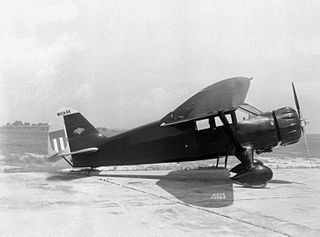
The Stinson Reliant is a popular single-engine four- to five-seat high-wing monoplane manufactured by the Stinson Aircraft Division of the Aviation Manufacturing Corporation of Wayne, Michigan.

The Fisher P-75 Eagle was an American fighter aircraft designed by the Fisher Body Division of General Motors. Development started in September 1942 in response to United States Army Air Forces requirement for a fighter possessing an extremely high rate of climb, using the most powerful liquid-cooled engine then available, the Allison V-3420. The program was cancelled after only a small number of prototypes and production aircraft had been completed, as it was no longer required in its original role, could not be quickly deployed, and possessed no significant advantages over aircraft already in production.

The Tangier American Legation (Arabic: المفوضية الأميركية في طنجة; French: Légation américaine de Tanger), officially the Tangier American Legation Institute for Moroccan Studies (TALIMS), is a building in the medina of Tangier, Morocco that formerly housed the United States diplomatic mission to Morocco. It was the first American public property abroad and is the only U.S. National Historic Landmark in a foreign country.

Royal Air Force Bentwaters or more simply RAF Bentwaters, now known as Bentwaters Parks, is a former Royal Air Force station about 80 miles (130 km) northeast of London and 10 miles (16 km) east-northeast of Ipswich, near Woodbridge, Suffolk in England. Its name was taken from two cottages that had stood on the site of the main runway during its construction in 1943.

The Ulidiidae or picture-winged flies are a large and diverse cosmopolitan family of flies (Diptera), and as in related families, most species are herbivorous or detritivorous. They are often known as picture-winged flies, along with members of other families in the superfamily Tephritoidea that have patterns of bands or spots on the wings. Some species share with the Tephritidae an unusual elongated posteroapical projection of the anal cell in the wing, but can be differentiated by the smoothly curving subcostal vein. Two species, Tetanops myopaeformis and Euxesta stigmatias, are agricultural pests.
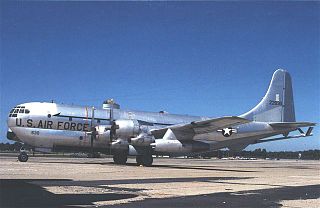
The Boeing KC-97 Stratofreighter is a four-engined, piston-powered United States strategic tanker aircraft based on the Boeing C-97 Stratofreighter. It replaced the KB-29 and was succeeded by the Boeing KC-135 Stratotanker.
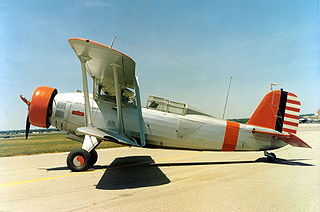
The Douglas O-38 was an observation airplane used by the United States Army Air Corps.

The Douglas O-46 was an observation aircraft used by the United States Army Air Corps and the Philippine Army Air Corps.
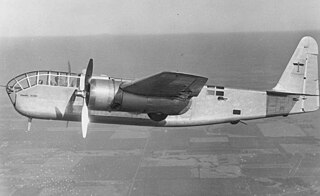
The Stearman XA-21 was a competitor in a United States Army Air Corps competition for a twin-engined attack aircraft which led to the Douglas A-20 Havoc, Martin A-22 Maryland and North American B-25 Mitchell.
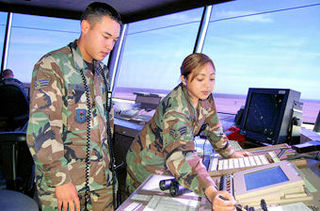
The 81st Training Wing is a wing of the United States Air Force and the host wing at Keesler Air Force Base, Mississippi. The 81st Training Wing has the Air Force's largest Technical Training Group and trains more than 40,000 students annually. Training includes weather, basic electronics, communications electronic systems, communications computer systems, air traffic control, airfield management, command post, air weapons control, precision measurement, education and training, financial management and comptroller, information management, manpower and personnel, radar, ground radio, and network control.

The 390th Strategic Missile Wing was an intercontinental ballistic missile organization of the United States Air Force. Part of Strategic Air Command, it was stationed at Davis–Monthan Air Force Base, Arizona.
Dyscrasis is a genus of picture-winged flies in the family Ulidiidae.

The 81st Fighter-Bomber Group is an inactive United States Air Force unit. It was last assigned to the 81st Fighter-Bomber Wing at RAF Bentwaters, England. It was inactivated on 8 February 1955.
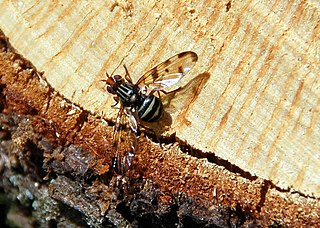
Otitinae is the name of a subfamily of flies in the family Ulidiidae. It was formerly the Otitidae. Like the Ulidiinae, most species are herbivorous or saprophagous. Most species share with the Tephritidae an unusual elongated projection of the anal cell in the wing, but can be differentiated by the smoothly curving subcostal vein. Most are dull gray to shiny brown or black flies with vein R1 setulose or, in a few cases, bare.

Myennidini is a tribe of picture-winged flies in the family Ulidiidae.



















